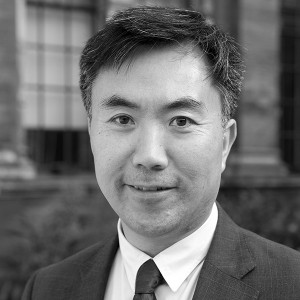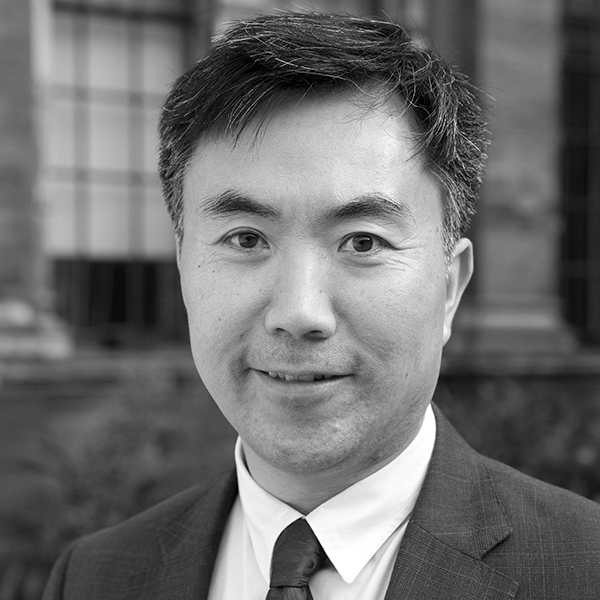The SOAS alumni column seeks to track down what the alumni are doing after they graduated from SOAS and tries to elicit crucial advice on how to survive in the “real world”. This issue we interview Dr Hongxing Zhang who works as a Senior Curator at the V&A (Victoria and Albert Museum) where he just conducted the highly-praised “Masterpieces of Chinese Painting 700-1900” exhibition.
By Dorina Marlen Heller

SOAS Spirit: Before we start with the SOAS part: You recently held a very well-received and successful exhibition on “Masterpieces of Chinese Painting 700-1900” at the V&A. What was the motivation for doing that exhibition?
Hongxing Zhang: It was a simple motivation: The institution realised that the last exhibition on this subject of this scale has been about 80 years ago, in 1935 before the war, which really is surprising. Since then many generations of the people in Britain haven’t had the chance to see that kind of overview of the Chinese painting traditions which really makes an impact on people’s understanding of contemporary Chinese culture. And people’s background knowledge of China’s history is really lacking and with our exhibition we wanted to fill this gap. It is a very important subject since Chinese painting is a 4000-year-old core part of artistic values in China. It is one of the most expressive forms for the feelings and ideas of Chinese people. It is not just painting, it is poetry and philosophy and very emotional. In this way we wanted to give an in-depth introduction to Chinese culture.
SS:And what is your history with SOAS and what was the reason for coming here?
HZ:I came to SOAS in 1994 and stayed for four years to do my PhD. At that time SOAS was really different from nowadays, of course. I did my thesis on military painting in the 19th century commissioned by the Imperial Court and taking into account the Taiping Rebellion, a very specific topic but of such an importance for modern China’s history. The Taiping Rebellion was the largest civil war in the world at that time. And there never has been any study exploring how the Quing government viewed this rebellion.
I come from Nanjing and I studied History of Art there and in China we do have a long history of the subject, but I was always interested in different views on Chinese art. Especially in the American and British approach to it. And I was also interested in Western art and I believe that the best scholars for this subject still are in this country. It is a very lively and special community here.
SS:How has SOAS influenced your work and later life?
HZ: A lot. It taught me the basic foundations and conventions of scholarship. In China the writing and research methods in any of the humanities are quite different. You know, the footnoting, bibliography and so on. And it is so important that I got a solid training in that at SOAS through writing, through talking to my supervisors.
SS: How would you describe SOAS in a few words?
HZ: Eccentric, I would say, and the people there are interested in topics which are not necessarily trendy or popular, but important. That’s what I like about SOAS. It’s a very special place. Quite unique.
SS: Are you still in any way affiliated with SOAS?
HZ: Not so much, I lead a life at the museum now, we have a quite a good library here. But I do sometimes attend research seminars in SOAS and use the library, particularly the Chinese collections. But I do think that SOAS really needs to update some of its library resources. Particularly the Chinese e-resources.
SS: Could you tell me about a significant memory or encounter that happened at SOAS?
HZ: I think what is memorable are the relationships I had with the supervisors and staff members. Although I usually ‒ like so many other people – spent most of my time in the library, at the end of the day I would often go to one of the teachers who also was a friend and would have a cup of Chinese tea with him in his office where he always kept some Chinese tea leaves. And that was a very nice tradition. I think in other universities there is no such environment. Also when I come there nowadays, especially at lunchtime, the square between the two buildings is always very lively. It is such a nice atmosphere.
SS: How did your professional life develop after your time at SOAS?
HZ: I was lucky to be able to get a two-year job teaching in East Anglia University as an academic and then I moved quickly to a job in a museum, the Royal Museum in Scotland, in Edinburgh. And I liked it, so I wanted to stick to this kind of job also when I moved to London. I found that working in the museum area was the best career for me. Because as a foreigner here I think a museum is a better place to express myself, my interests and ideas through the exhibitions, museum publications and other activities. Better than at a university because when I taught there I felt that it is good, but too academic and the audience is too small. I felt like I was not part of society. But when you work in a museum you are influenced by the public as well as able to influence the public yourself. And we have here “Comment: at the V&A”, for example, every month, a public opinions-service event. This means that people bring, for example, family heritage pieces with them and can ask the museum staff for professional opinions on them. And every day we receive emails from the public, people asking all kinds of questions or giving feedback on current exhibitions. It makes me feel that I am contributing to society with my work. That it is meaningful. Whereas as an academic you can often lead a very isolated life. And that is what I enjoy most about my work. That I make an impact.
